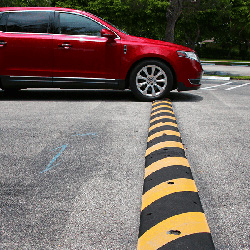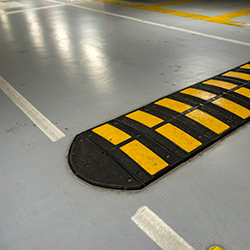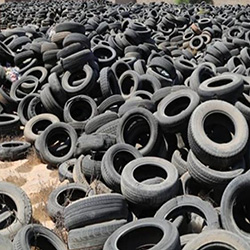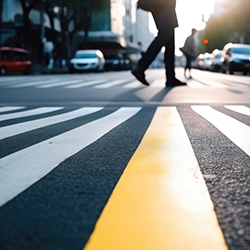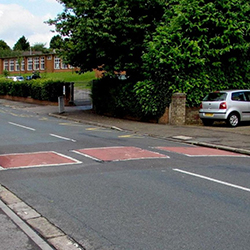Enhance Your Business with Customized Tangle Mats
Introduction
Welcome to the world of customized tangle mats – the latest trend in showcasing business logos! In today’s competitive market, businesses are constantly looking for ways to stand out and make a lasting impression on their customers. And what better way to do that than with a high-quality, visually appealing logo mat? In this article, we will delve into the world of custom carpet logo mats and explore the benefits and features they offer for businesses of all types. From the precise computer-driven printing process to the 53-set color palette to choose from, these mats are a surefire way to enhance your brand’s image and make a statement. So, whether you’re a retail store, a hospitality business, or a healthcare facility, read on to discover how custom carpet logo mats can take your branding and marketing efforts to the next level. Let’s get started! Continue reading “Enhance Your Business with Customized Tangle Mats” »Do speed bumps ruin tires?
Introduction
Have you ever wondered, “Do speed bumps ruin tires?” If so, you’re not alone. This is a question that nags at the mind of many drivers, whether they’re navigating the residential backroads peppered with speed bumps or cruising down the highway. Speed bumps, those ubiquitous humps of asphalt designed to slow us down, can seem more like road obstacles than safety devices. This article aims to shed light on the potential damage to your tires when driving over speed bumps too fast. Continue reading “Do speed bumps ruin tires?” »Enhancing Pedestrian Safety with Speed Bumps and Humps
Introduction
Importance of pedestrian safety
Pedestrian safety is of utmost importance in today’s fast-paced world. With the increase in traffic and the growing number of vehicles on the road, it is crucial to implement effective measures to ensure the safety of pedestrians. Speed bumps and humps play a significant role in enhancing pedestrian safety. These traffic calming devices help to reduce vehicle speed, making it safer for pedestrians to cross the road. By slowing down vehicles, speed bumps and humps provide a visual cue to drivers to be more cautious and attentive, ultimately reducing the risk of accidents and improving pedestrian safety. Implementing these measures not only protects pedestrians but also promotes a sense of community and encourages more people to choose walking as a mode of transportation. Therefore, it is essential to recognize the importance of pedestrian safety and take proactive steps in implementing measures like speed bumps and humps to create safer and more walkable neighborhoods.
Overview of speed bumps and humps
Speed bumps and humps are traffic calming measures designed to reduce vehicle speeds and enhance pedestrian safety. They are typically installed on residential streets, parking lots, and other areas with high pedestrian activity. Speed bumps are raised sections of pavement that force drivers to slow down, while speed humps are longer and flatter, allowing vehicles to maintain a slightly higher speed. Both speed bumps and humps serve as visual and physical cues to drivers, reminding them to be cautious and watch for pedestrians. By effectively slowing down vehicles, these traffic calming measures help create a safer environment for pedestrians and reduce the risk of accidents and injuries.
Purpose of the article
The purpose of this article is to explore the effectiveness of speed bumps and humps in enhancing pedestrian safety. With the increasing number of accidents involving pedestrians, it is crucial to implement measures that can reduce vehicle speeds and improve safety on roads. Speed bumps and humps have been widely used as traffic calming measures to slow down vehicles in areas with high pedestrian activity. This article will discuss the benefits of speed bumps and humps in reducing vehicle speeds, enhancing driver awareness, and ultimately creating safer environments for pedestrians.
Types of Speed Bumps
Traditional speed bumps
Traditional speed bumps are a common method used to control vehicle speed and enhance pedestrian safety. These raised sections of pavement are typically found on residential streets, parking lots, and school zones. They are designed to force drivers to slow down by creating a jarring sensation when a vehicle passes over them. The purpose of traditional speed bumps is to reduce the risk of accidents, especially in areas where pedestrians are present. By effectively slowing down vehicles, speed bumps help to create a safer environment for pedestrians, encouraging drivers to be more cautious and alert. However, traditional speed bumps also have some drawbacks. They can cause discomfort and inconvenience for drivers, particularly those in emergency vehicles or vehicles with low ground clearance. Additionally, speed bumps may contribute to noise pollution and increase fuel consumption. Despite these limitations, traditional speed bumps remain a widely used tool in improving pedestrian safety.
Speed humps
Speed humps are an effective traffic calming measure that can greatly enhance pedestrian safety. These raised devices, typically made of asphalt or rubber, are strategically placed on roadways to slow down vehicle speeds. By forcing drivers to reduce their speed, speed humps help create a safer environment for pedestrians, especially in areas with high foot traffic such as residential neighborhoods, school zones, and shopping centers. The presence of speed humps also serves as a visual reminder for drivers to be more cautious and attentive, reducing the risk of accidents and improving overall road safety.
Raised crosswalks
Raised crosswalks, also known as speed humps or speed bumps, are an effective measure to enhance pedestrian safety. These elevated structures are designed to slow down vehicle traffic at designated crossing points, making it safer for pedestrians to cross the road. By forcing drivers to reduce their speed, raised crosswalks help to prevent accidents and promote a safer environment for pedestrians. Additionally, the visibility of these raised structures serves as a visual cue for drivers to be more cautious and attentive while approaching and crossing the crosswalk. Overall, raised crosswalks play a crucial role in ensuring pedestrian safety and should be considered as a key component in any traffic calming strategy.
Benefits of Speed Bumps and Humps
Reduced vehicle speed
Reduced vehicle speed is one of the key benefits of implementing speed bumps and humps to enhance pedestrian safety. By introducing these traffic calming measures, drivers are forced to slow down, creating a safer environment for pedestrians. The presence of speed bumps and humps encourages drivers to be more cautious and attentive, reducing the risk of accidents and potential injuries. Moreover, the reduced speed allows pedestrians to have more time to cross the road safely, especially in high-traffic areas or near schools and residential neighborhoods. Overall, the implementation of speed bumps and humps plays a crucial role in reducing vehicle speed and ensuring the safety of pedestrians.
Increased pedestrian safety
Increased pedestrian safety is a crucial aspect of urban planning and traffic management. One effective measure that has been widely adopted is the installation of speed bumps and humps. These physical traffic calming devices are strategically placed on roads to slow down vehicles and encourage drivers to be more cautious. By reducing vehicle speeds, speed bumps and humps help create a safer environment for pedestrians, especially in areas with high foot traffic such as residential neighborhoods, school zones, and shopping centers. Studies have shown that the presence of speed bumps and humps can significantly decrease the number of accidents involving pedestrians, making them an essential tool in enhancing pedestrian safety.
Improved traffic calming
Improved traffic calming measures, such as speed bumps and humps, have proven to be effective in enhancing pedestrian safety. By reducing vehicle speeds in residential areas and near schools, these traffic calming devices help create a safer environment for pedestrians to walk and cross the streets. The presence of speed bumps and humps serves as a visual reminder for drivers to slow down, making them more aware of their surroundings and the need to yield to pedestrians. Additionally, these measures encourage responsible driving behavior and discourage reckless speeding, ultimately reducing the risk of accidents and injuries. Overall, the implementation of speed bumps and humps as part of traffic calming initiatives plays a crucial role in improving pedestrian safety and creating more walkable communities.
Design Considerations
Placement of speed bumps and humps
The placement of speed bumps and humps plays a crucial role in enhancing pedestrian safety. These traffic calming measures are typically installed in areas with high pedestrian activity, such as residential neighborhoods, school zones, and parking lots. The strategic placement of speed bumps and humps helps to slow down vehicles, forcing drivers to reduce their speed and be more cautious. They are often positioned near crosswalks, intersections, and areas where there is a higher risk of pedestrian accidents. By effectively controlling the speed of vehicles, speed bumps and humps contribute to creating a safer environment for pedestrians, reducing the likelihood of accidents and promoting pedestrian-friendly spaces.
Height and width specifications
Height and width specifications play a crucial role in the effectiveness of speed bumps and humps in enhancing pedestrian safety. These specifications determine the level of impact on vehicles and the speed at which drivers need to slow down. Generally, speed bumps are designed to have a height of 3 to 4 inches and a width of 12 to 14 feet, while speed humps have a height of 3 to 4 inches and a width of 22 to 24 feet. These dimensions are carefully chosen to ensure that drivers are forced to reduce their speed and pay attention to pedestrians, creating a safer environment for everyone. Moreover, adhering to these specifications ensures consistency in the implementation of speed bumps and humps, allowing drivers to anticipate and adjust their driving behavior accordingly.
Materials used
In order to enhance pedestrian safety, various materials are used for constructing speed bumps and humps. These materials are specifically designed to withstand heavy traffic and adverse weather conditions. Common materials include rubber, asphalt, concrete, and plastic. Rubber speed bumps are popular due to their durability and flexibility, which allows them to absorb impact and reduce vehicle speed effectively. Asphalt and concrete speed bumps are known for their strength and longevity, making them suitable for high-traffic areas. Plastic speed bumps are lightweight and easy to install, making them a cost-effective option for temporary traffic control. Overall, the choice of materials for speed bumps and humps depends on the specific requirements of the location and the desired level of effectiveness in slowing down vehicles and ensuring pedestrian safety.
Challenges and Limitations
Impact on emergency vehicles
Speed bumps and humps have a significant impact on emergency vehicles. While these traffic calming measures are effective in reducing vehicle speeds and improving pedestrian safety, they can also slow down emergency response times. The raised surfaces of speed bumps and humps require emergency vehicles to reduce their speed, which can delay their arrival at the scene of an emergency. This delay can have serious consequences, especially in life-threatening situations where every second counts. Therefore, it is crucial to carefully consider the placement and design of speed bumps and humps to minimize their impact on emergency vehicles while still ensuring the safety of pedestrians.
Noise and vibration
Noise and vibration are important factors to consider when implementing speed bumps and humps for pedestrian safety. Speed bumps and humps can generate noise and vibrations, especially when vehicles pass over them at high speeds. This can be a concern for nearby residents, as excessive noise and vibrations can disrupt their daily lives and affect their quality of life. Therefore, it is crucial to design and install speed bumps and humps in a way that minimizes noise and vibrations while still effectively slowing down vehicles and ensuring pedestrian safety. Various measures, such as using materials with noise-dampening properties and implementing proper installation techniques, can help mitigate the noise and vibration impact of speed bumps and humps. By addressing these concerns, we can enhance pedestrian safety without compromising the well-being of the surrounding community.
Maintenance and cost
Maintenance and cost are important considerations when implementing speed bumps and humps for enhancing pedestrian safety. Regular maintenance is necessary to ensure that the speed bumps and humps are in good condition and functioning effectively. This includes inspecting and repairing any damage, repainting the markings, and cleaning the surfaces. The cost of maintenance can vary depending on the material used for the speed bumps and humps, the frequency of maintenance, and the size of the installation. However, the investment in regular maintenance is crucial to ensure the long-term effectiveness and safety of these traffic calming measures.
Case Studies
City A: Effectiveness of speed bumps
Speed bumps have been widely implemented in City A as a measure to enhance pedestrian safety. These physical traffic calming devices are strategically placed on roads with high pedestrian activity to reduce vehicle speeds. The effectiveness of speed bumps in City A has been well-documented, with studies showing a significant decrease in the number of accidents involving pedestrians. The presence of speed bumps not only forces drivers to slow down but also increases their awareness of pedestrians, making the streets safer for everyone. Additionally, speed bumps have been found to promote a sense of community and encourage active transportation by creating a more pedestrian-friendly environment. Overall, the implementation of speed bumps in City A has proven to be an effective strategy in improving pedestrian safety and fostering a safer and more livable city.
City B: Implementation of speed humps
City B has implemented speed humps as a measure to enhance pedestrian safety. These speed humps are strategically placed in areas with high pedestrian activity, such as school zones and residential neighborhoods. The implementation of speed humps has proven to be effective in slowing down vehicles and reducing the risk of accidents. By forcing drivers to reduce their speed, speed humps provide a safer environment for pedestrians to cross the road. City B’s commitment to pedestrian safety is commendable, and the use of speed humps is a valuable tool in achieving this goal.
City C: Success of raised crosswalks
City C has seen great success in enhancing pedestrian safety through the implementation of raised crosswalks. These raised crosswalks, also known as speed bumps and humps, have proven to be effective in reducing vehicle speeds and increasing awareness of pedestrians. The city has strategically placed these raised crosswalks in high pedestrian traffic areas, such as near schools, parks, and residential areas. As a result, there has been a significant decrease in the number of pedestrian accidents and injuries. The success of raised crosswalks in City C serves as a model for other cities looking to improve pedestrian safety and create a more walkable environment.



